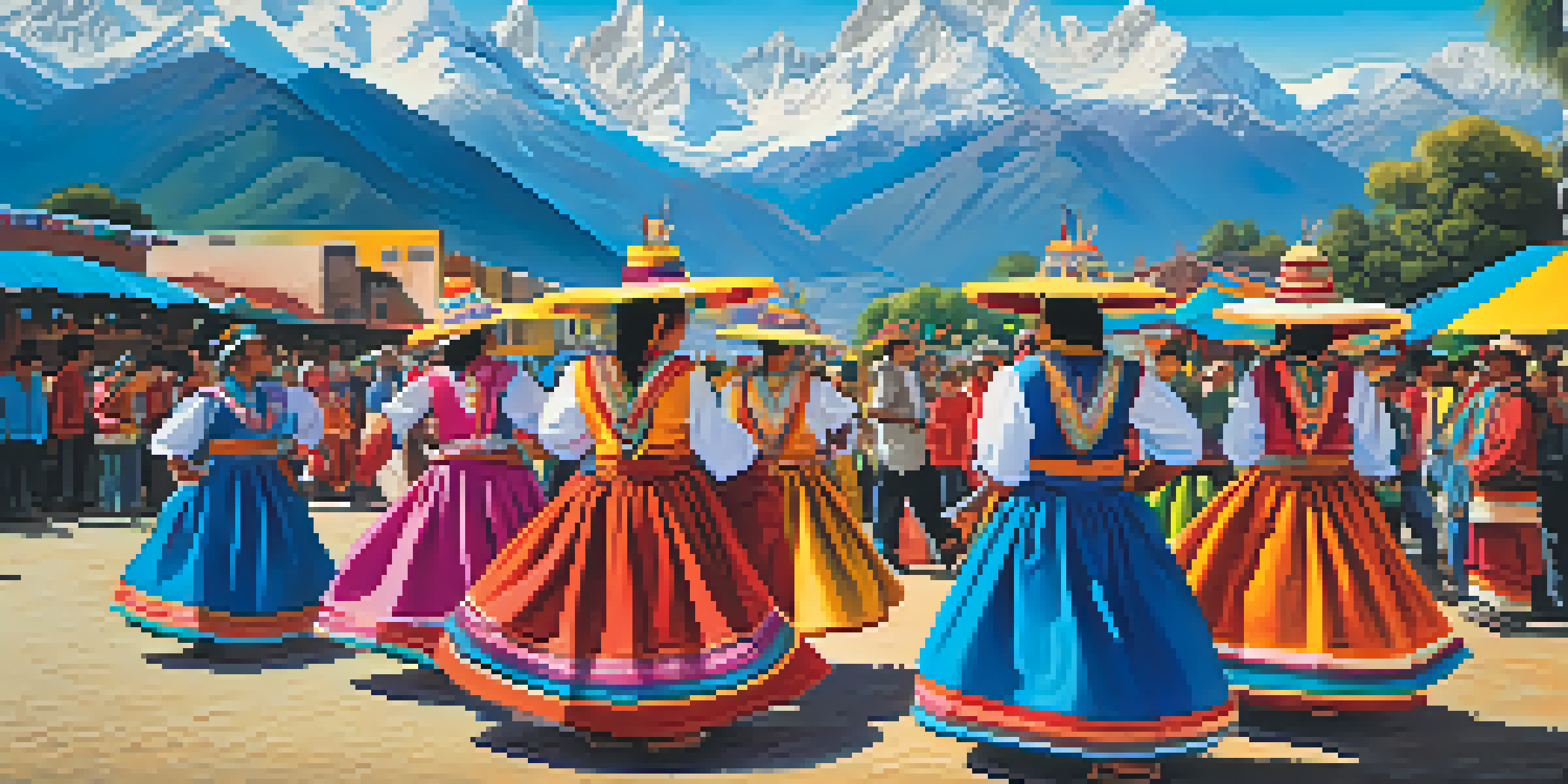Cultural Preservation through Sustainable Tourism in Peru

Understanding Cultural Preservation and Its Importance
Cultural preservation is the effort to safeguard a community's heritage, traditions, and history. In Peru, this is particularly vital given its diverse indigenous cultures and historical landmarks. By maintaining cultural practices, communities can foster a sense of identity and continuity, ensuring that future generations appreciate their roots.
Preservation of one's own culture does not require contempt or disrespect for other cultures.
In the face of globalization, which often homogenizes cultures, preserving unique traditions has become increasingly crucial. This is where sustainable tourism steps in, offering a way for visitors to engage with local culture without causing harm. By prioritizing cultural integrity, tourism can support local economies while honoring the rich tapestry of Peru's heritage.
For instance, communities may host cultural festivals or workshops, allowing tourists to participate and learn. This not only educates visitors about local customs but also empowers the community, as they take the lead in sharing their stories and traditions.
The Role of Sustainable Tourism in Cultural Preservation
Sustainable tourism focuses on minimizing negative impacts while maximizing benefits for local communities. In Peru, this involves creating tourism experiences that respect and celebrate cultural heritage. Rather than merely observing, tourists are encouraged to engage with local practices, from traditional crafts to culinary arts.

For example, travelers might partake in a weaving workshop led by local artisans, helping to keep these age-old skills alive. This symbiotic relationship not only provides income for artisans but also enriches the tourist experience, making it more meaningful. When tourists understand the significance of what they're experiencing, they're more likely to respect and support it.
Cultural Preservation is Essential
Safeguarding Peru's diverse heritage fosters identity and continuity for future generations.
Moreover, sustainable tourism initiatives often include educational components, informing visitors about the history and significance of cultural practices. This awareness can lead to a deeper appreciation, fostering a sense of responsibility among travelers to protect what they enjoy.
Examples of Sustainable Tourism Initiatives in Peru
Many organizations in Peru are dedicated to promoting sustainable tourism that respects cultural heritage. For instance, the Sacred Valley has seen a rise in eco-friendly lodges that partner with local communities. These lodges often provide tours led by local guides, ensuring that the stories and customs shared are authentic and rooted in tradition.
Travel brings power and love back into your life.
In addition, projects like the Q'ente Project focus on preserving local languages and traditions through immersive experiences. Tourists can participate in community rituals and learn about ancient practices, creating a two-way exchange that benefits both visitors and locals. This hands-on approach allows for a deeper understanding of the cultural landscape.
Such initiatives not only contribute to cultural preservation but also encourage economic sustainability. By prioritizing local resources and knowledge, these projects help communities thrive while safeguarding their unique identity.
Challenges Faced in Cultural Preservation
Despite the benefits of sustainable tourism, challenges remain in the effort to preserve culture in Peru. One significant issue is the risk of commercialization, where traditions may be altered to cater to tourist expectations. This can dilute the authenticity of cultural experiences, leading to a loss of the very identity that tourism seeks to protect.
Moreover, not all communities have equal access to the benefits of tourism. Some may struggle with inadequate infrastructure or lack of support from government initiatives. This disparity can lead to tensions within communities as they navigate the complexities of engaging with the tourism industry.
Sustainable Tourism Benefits Locals
Engaging tourists in local traditions supports economic growth while preserving cultural practices.
It's essential to approach these challenges with a collaborative mindset, ensuring that the voices of local communities are prioritized in tourism development. Only by working together can we create a future where culture is preserved while also thriving economically.
The Importance of Community Involvement
Community involvement is crucial for the success of sustainable tourism initiatives. When locals are actively engaged in tourism development, they can share their stories and traditions authentically. This not only enhances the visitor experience but also empowers communities to take pride in their heritage.
By fostering a sense of ownership, communities are more likely to invest in preserving their culture. Programs that involve locals in decision-making processes help ensure that tourism respects their values and traditions. This collaborative approach creates a stronger bond between visitors and the host community.
Additionally, when tourists see the genuine passion of local residents for their culture, it enhances the overall experience. This connection can lead to more meaningful interactions and a deeper appreciation for the rich cultural heritage that Peru has to offer.
The Economic Benefits of Sustainable Tourism
Sustainable tourism not only helps preserve culture but also brings significant economic benefits to local communities. By attracting visitors interested in authentic cultural experiences, communities can create jobs and generate income. This economic boost can lead to improved infrastructure and services, benefiting residents and tourists alike.
For example, local artisans can sell their crafts directly to visitors, ensuring that they receive fair compensation for their work. This direct link between tourists and producers fosters a sense of community and encourages the preservation of traditional crafts. The more tourists appreciate and invest in local culture, the more sustainable these practices become.
Community Involvement Drives Success
When locals actively participate in tourism, it enhances authenticity and empowers cultural pride.
Moreover, the revenue generated from sustainable tourism can be reinvested into cultural preservation efforts. This can include funding for cultural festivals, educational programs, and initiatives to protect historical sites, ensuring that the essence of Peru's rich cultural heritage continues to thrive.
Future Directions for Sustainable Tourism in Peru
Looking ahead, the future of sustainable tourism in Peru is promising, yet it requires careful planning and collaboration. Emphasizing responsible travel practices can help mitigate the negative impacts of tourism while benefiting local communities. Encouraging travelers to engage with and respect cultural traditions is key to ensuring longevity.
Additionally, leveraging technology can play a role in promoting sustainable tourism. Online platforms can connect tourists with local experiences, allowing for a more personalized and authentic journey. This technology can also help raise awareness about the importance of cultural preservation.

Ultimately, the success of sustainable tourism in Peru hinges on a collective effort from all stakeholders, including travelers, communities, and policymakers. By working together, we can create a future that honors the rich cultural heritage of Peru while providing a sustainable way for it to flourish.